Thinking About Bangs? A Stylist’s Honest Guide to the Perfect Fringe
I’ve been a hairstylist for what feels like a lifetime, and if there’s one thing I’ve learned, it’s this: trends will come and go, but a great fringe is forever. Seriously, face-framing bangs are more than just a haircut; they’re one of the most powerful tools we have. They can soften a jawline, make your eyes pop, or just completely shift your whole vibe. I had a mentor early in my career who put it perfectly. He said, “The hair is the frame, but the bangs are the matting. They draw the eye to the art.” I never forgot that.
In this article
So many people walk into the salon clutching a photo of some celebrity, wanting that exact look. But here’s the secret: my job isn’t to be a copy machine. It’s to figure out what you love about that picture and then make it work for your face, your hair, and—most importantly—your real life. That’s where the magic happens. It’s a conversation, a bit of trust, and a lot of understanding the craft. This guide is me opening up my playbook from thousands of haircuts, from simple trims to big-time corrections on DIY jobs gone wrong. We’ll get into the theory, the techniques, and the honest truth about what it’s really like to live with bangs.
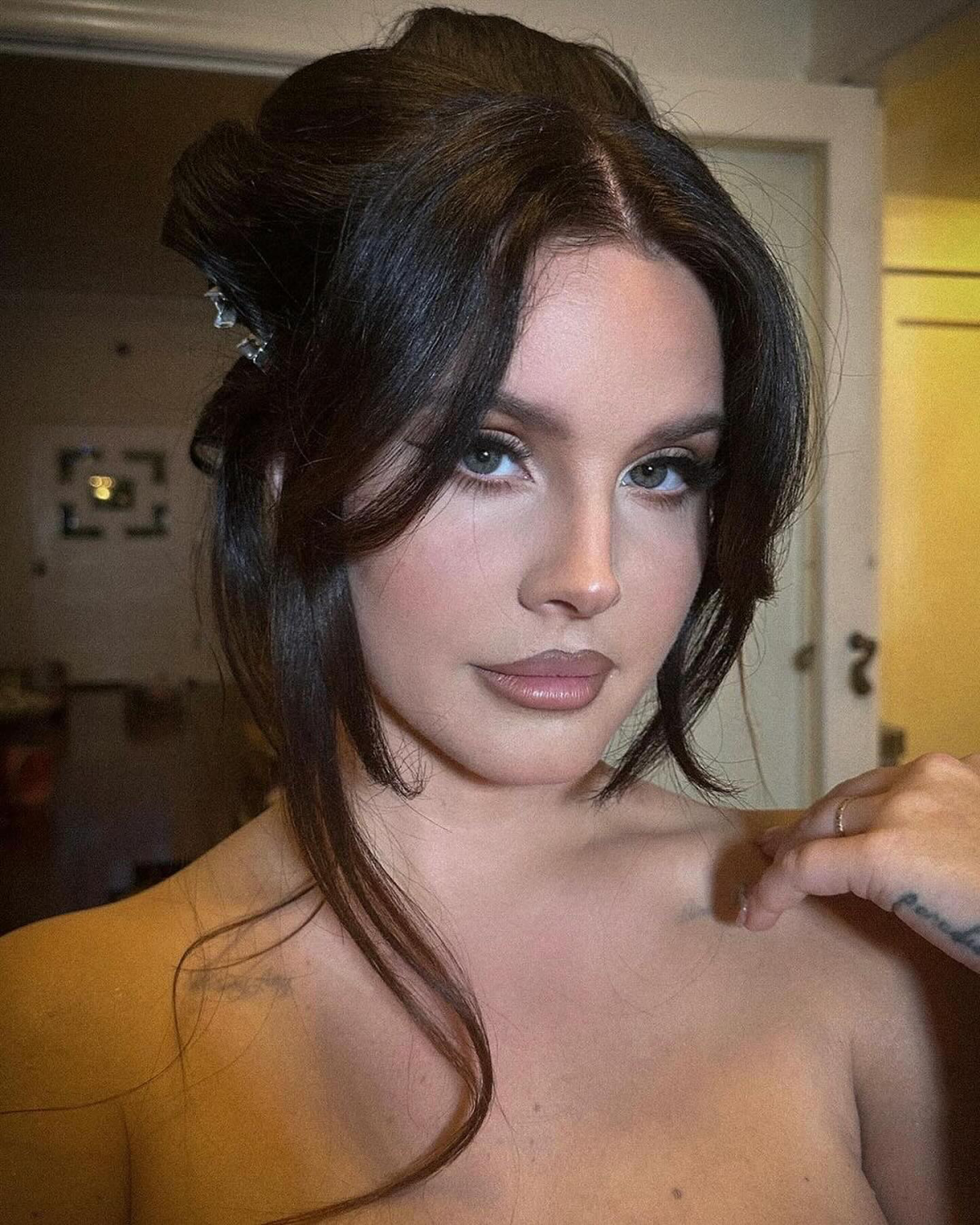
First Things First: It’s More Than Just Your Face Shape
Before my scissors even think about touching your hair, I do a little detective work. It’s not just about pegging you as “oval” or “square.” That’s old-school advice and way too simple. To get it right, we have to look at the physics of your hair and the unique landscape of your face.
Your Hair’s Personality
Not all hair is created equal, and your bangs will have a mind of their own if we don’t respect their natural tendencies.
- Density: This is all about how much hair you have packed onto your head. If you have low-density, or thin hair, a heavy, solid bang is a no-go; it will just separate and look stringy. We’d aim for something soft and wispy. On the other hand, if you have super thick, high-density hair, we need to take some of the weight out so your bangs don’t look like a helmet.
- Texture: This is about the individual strands. Fine hair is soft but can get weighed down by oils from your forehead fast, making bangs look limp by lunch. Coarse hair has more body but can be wiry and fight you every step of the way. And wavy or curly hair? That’s a whole other beautiful ballgame we’ll get to.
- Growth Patterns: Honestly, this is the big one. I’m talking about cowlicks. A strong cowlick at the hairline is the number one saboteur of good bangs. If you cut right into it, that little section of hair is going to stick straight up, guaranteed. I once had to help a client who tried to give herself some classic, short micro-bangs and ended up with a permanent tuft of hair standing at attention. The only fix was to wait for it to grow. The pro move is to work with the cowlick, usually by leaving the bangs a bit longer and heavier right in that spot to weigh it down.
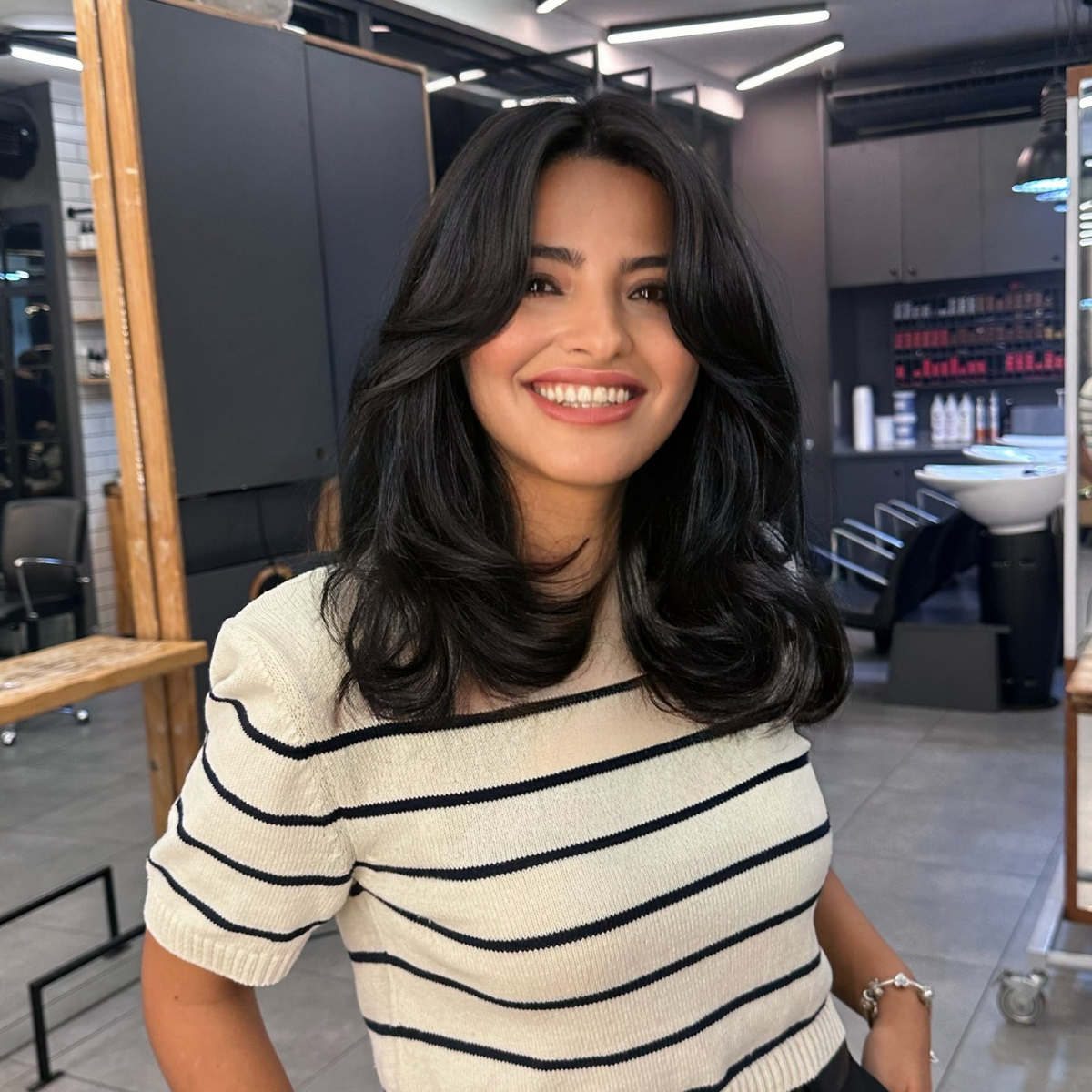
The Real Geometry of Your Face
Forget the simple shapes. A pro is looking at the details.
- Your Forehead: Got a shorter forehead? A heavy, blunt bang can make your face look a bit compressed. We’d probably go for something lighter. A high forehead, though, is the perfect canvas for almost any style and can be balanced beautifully by a fuller fringe.
- Your Eyes: We can use bangs to play with perception. For close-set eyes, we can start the bangs a little wider, closer to the outer arch of your brows, to draw attention outward. For wide-set eyes, we do the opposite, keeping the fringe more centered to create a sense of balance.
- Cheekbones and Jaw: This is the “framing” part! Want to show off amazing cheekbones? A curtain bang that swoops down and kisses the top of the cheekbone is like a little spotlight. For a stronger, more angular jaw, I’ll use softer, rounded bangs and blended layers to soften those lines. A sharp, horizontal bang would just make it look even more square.
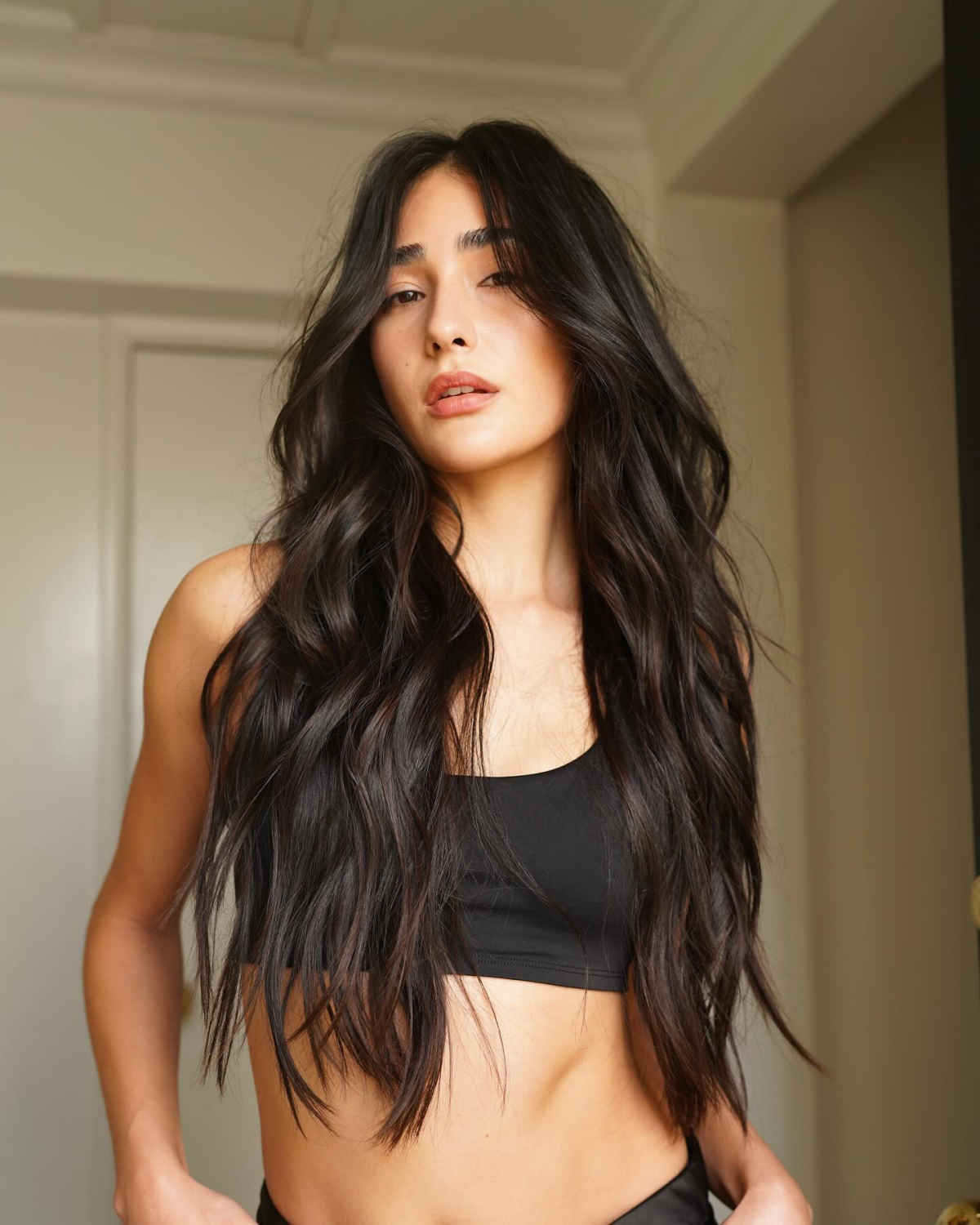
Which Bangs Are for You? A Practical Guide
Okay, let’s get to the fun part. Matching the style to your hair and your lifestyle is key. Forget a complicated chart; let’s just talk it through.
Curtain Bangs
These are the It-Girl of bangs—parted down the middle, sweeping to the sides. They’re fantastic for first-timers because they’re long and grow out gracefully.
• Best For: Almost anyone! They’re great at softening features and work on most hair types.
• Maintenance Level: Medium. They look effortless but aren’t. You’ll need trims every 6-8 weeks.
• Daily Styling Time: About 5 minutes. You’ll need to train them to get that signature ‘swoop’. A round brush and a blow dryer are your best friends here. A large-barrel curling iron works too!
Wispy Bangs
Think a light, see-through, delicate fringe. It’s soft and romantic.
• Best For: Fine or thin hair, since it doesn’t require a lot of density. Also great for softening a prominent forehead without committing to a heavy look.
• Maintenance Level: High, in a sneaky way. They get oily fast from your forehead. Daily styling is a must to keep them from looking piecey.
• Daily Styling Time: 2-3 minutes. Quick tip: Keep a mini dry shampoo in your bag for a 2 PM refresh. I love the ones from Klorane or Batiste (you can find Batiste at any drugstore for under $10). A quick spritz at the root brings them right back to life.
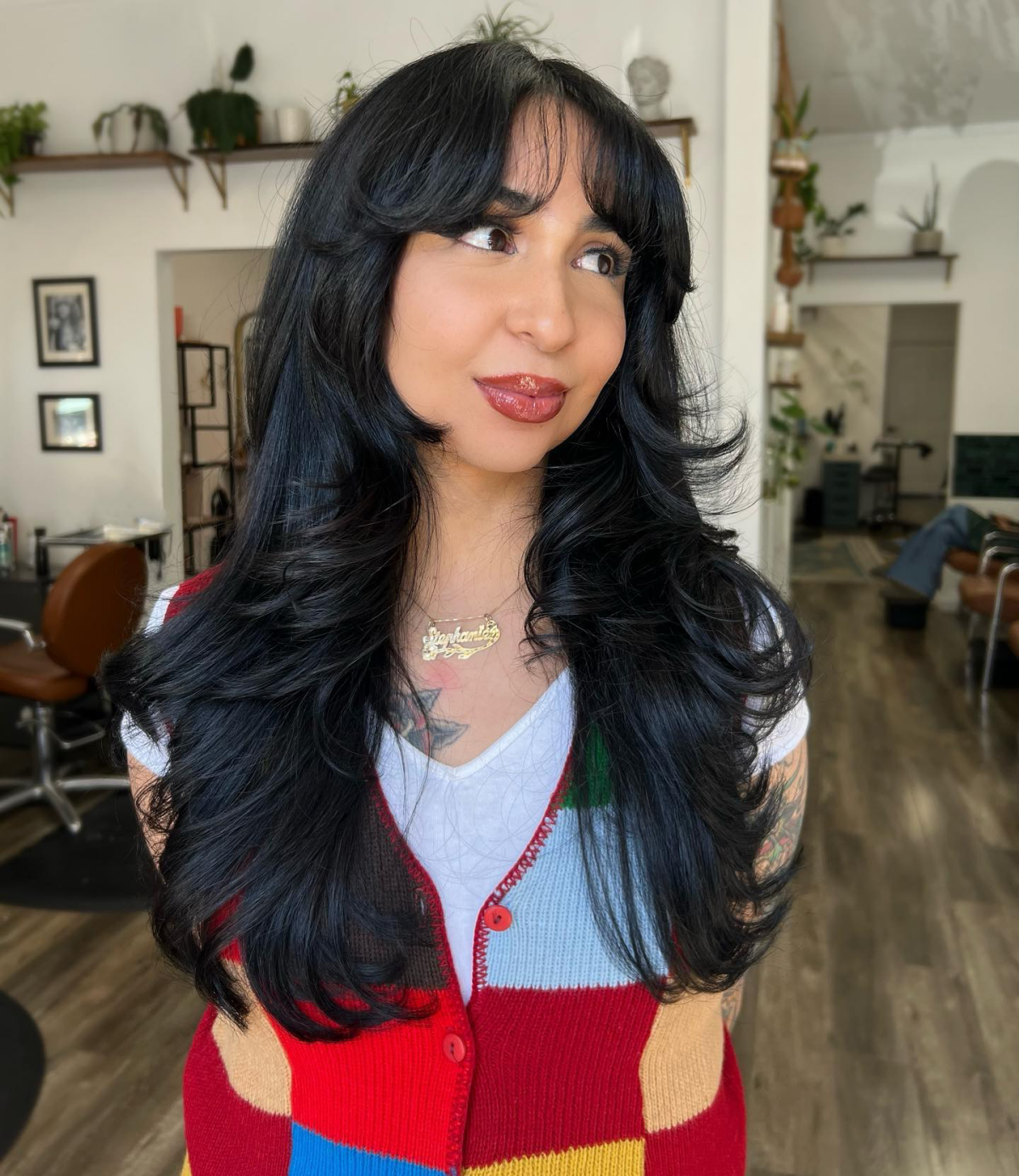
Blunt Bangs
A bold, solid, straight-across line. This is a statement look that’s confident and chic.
• Best For: Thick, straight hair and oval face shapes. You need the density to pull off the solid line.
• Maintenance Level: VERY High. This is a major commitment. They need to be styled perfectly every day and trimmed every 3-4 weeks to keep the line sharp.
• Daily Styling Time: 5-10 minutes. You’ll need a flat iron to get them perfectly smooth and straight. No exceptions.
Bottleneck Bangs
A modern, cooler sister to the curtain bang. They’re shorter in the middle and get longer towards the sides, like the neck of a bottle. They beautifully frame the eyes and cheekbones.
• Best For: Anyone looking for a softer, more modern face-framing effect. They grow out beautifully.
• Maintenance Level: Low to Medium. They’re designed to be a bit shaggy, so they’re more forgiving as they grow.
• Daily Styling Time: 3-5 minutes. A little bit of blow-drying to direct them is usually all it takes.
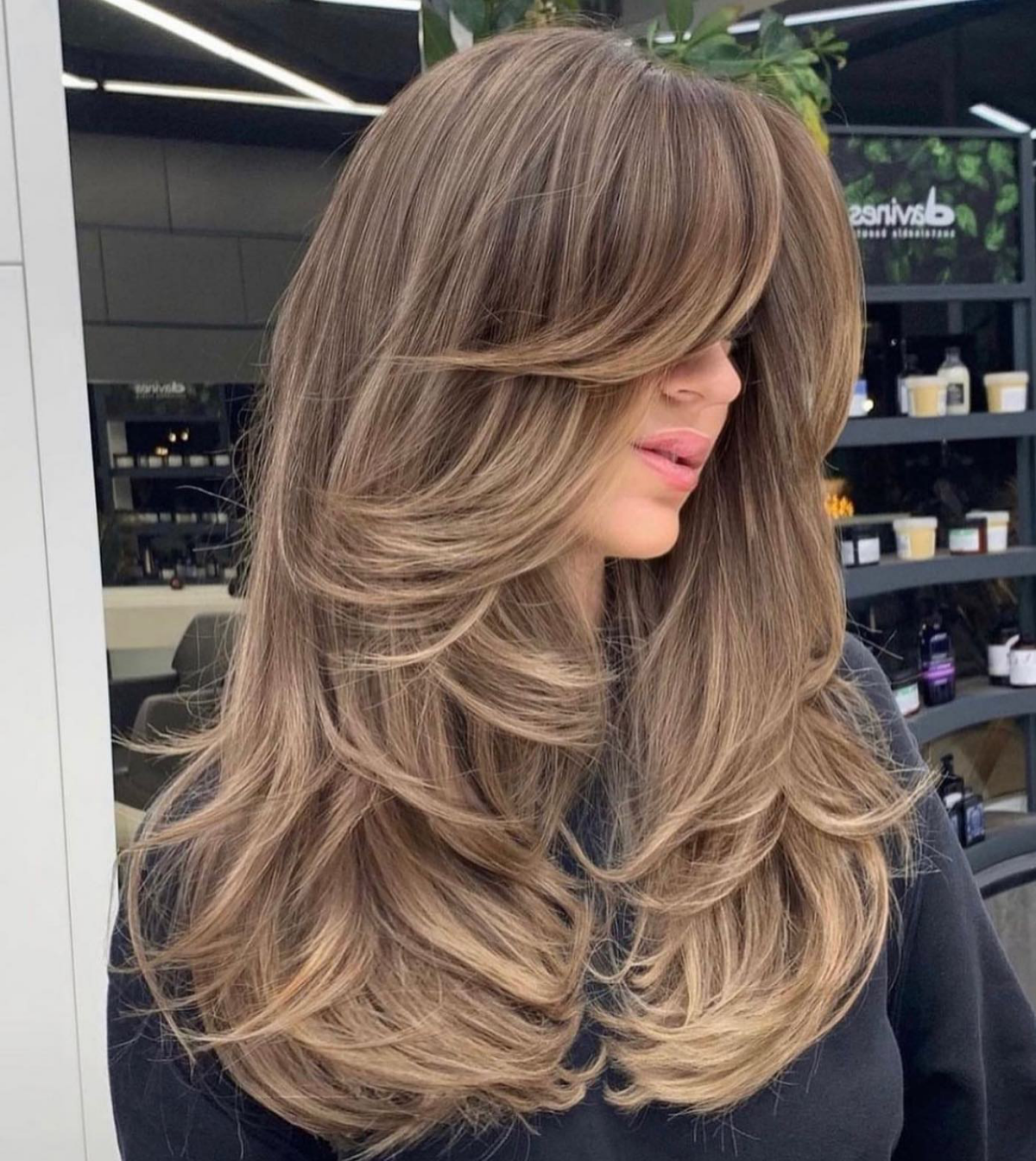
Curly Bangs
Bangs for curly hair are an absolute vibe, but they are a specialty. They have to be cut dry, curl by curl, to see how they’ll spring up.
• Best For: People with natural curls who are ready to embrace them!
• Maintenance Level: Medium. The cut is technical, but daily styling is often just about using the right curl cream and letting them be.
• Daily Styling Time: Depends on your curl routine! Could be 2 minutes for a refresh or longer on wash days. This is NOT a job for an inexperienced stylist or a DIY cut.
The Real Talk: Your Commitment to Bangs
The perfect fringe is a team effort. My skill is only half of it; the other half is your daily life. Before I even section off the hair, I ask the hard questions:
- How much time do you really spend on your hair? 5 minutes? 30? Be honest!
- Do you work out a lot? Do you need your hair completely off your face?
- Are you friends with your blow dryer and a round brush?
- How often can you realistically come in for a trim? Every 4 weeks? Every 8?
These answers change everything. If you tell me you’re a wash-and-go person who runs marathons, I’m not going to give you high-maintenance blunt bangs that will be a sweaty mess. We’d find a better fit, like longer layers that can be pinned back easily.
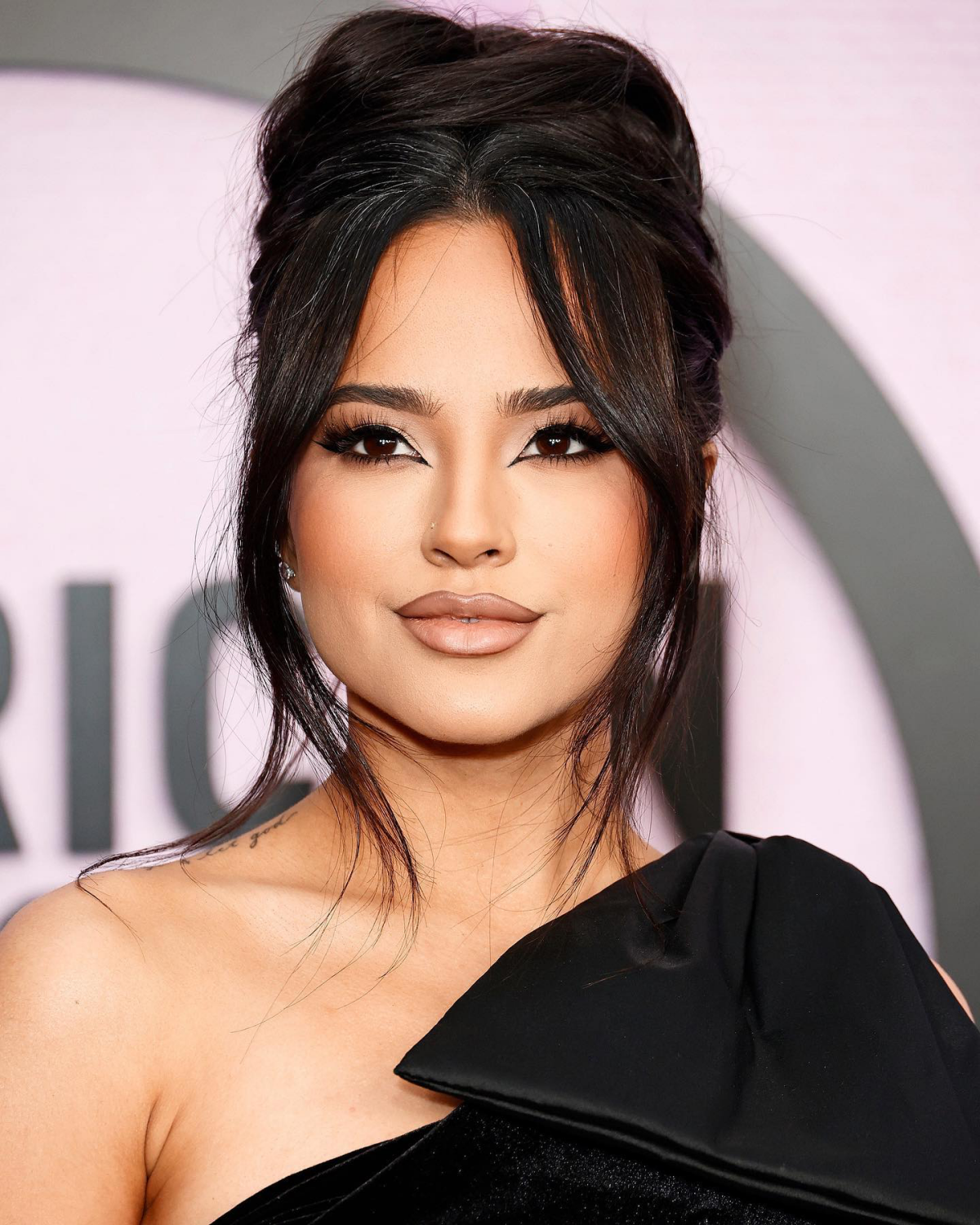
By the way, let’s talk cost. A good haircut that includes precision bangs isn’t cheap—it can range anywhere from $75 to over $200, depending on the salon’s reputation and your city. But here’s a pro tip: most reputable salons offer complimentary bang trims between your full haircut appointments. It takes us five minutes and keeps you happy. Always ask about this policy!
Your At-Home Toolkit and Styling Secrets
You don’t need my whole professional kit, but a few key items make all the difference.
• A Good Dry Shampoo: Non-negotiable for bangs. As I said, a travel-size one is a lifesaver.
• A Mini Flat Iron: Perfect for targeting just the bangs without having to heat up a full-size tool. Conair makes a great one for about $20.
• A Small Round Brush: A 1-inch to 1.5-inch ceramic or boar bristle brush gives you the best control for shaping.
• Lesser-known trick: Only your bangs feeling greasy? You don’t have to wash all your hair! Just clip the rest back, stick your head over the sink, and give only the fringe a quick wash and dry. It’s a total game-changer.
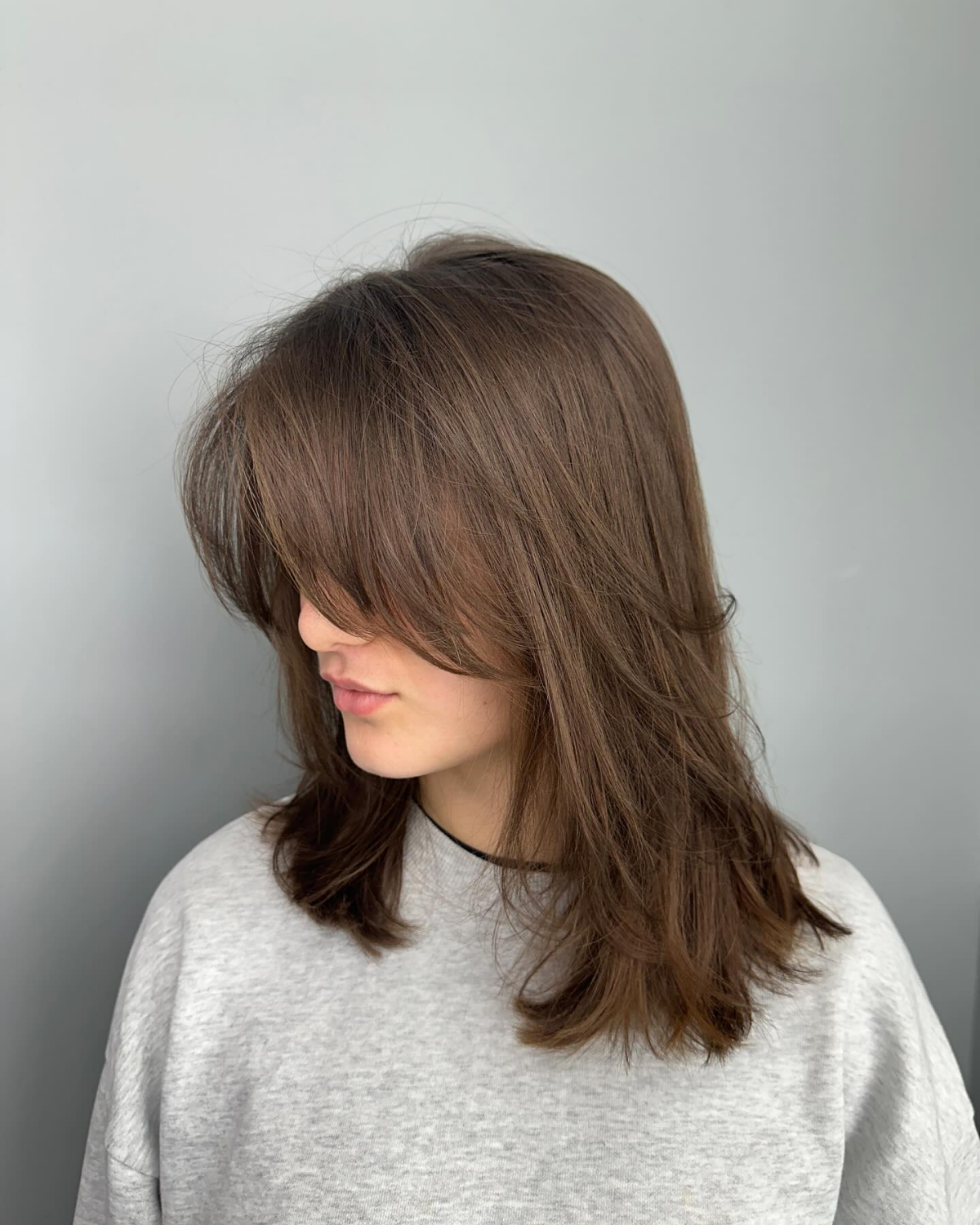
How to Tame That Pesky Cowlick
If you have a cowlick, you know the struggle. But you can win the battle with your blow dryer. Here’s the technique I teach everyone:
1. Get it Soaking Wet: Start with the cowlick area sopping wet. Misting it isn’t enough; you need to reset the root.
2. The Zig-Zag Dry: Use your dryer with the nozzle attachment on. Aim the air directly down at the root. Now, brush the cowlick hair back and forth—left, right, left, right—aggressively. Don’t worry about style yet. You’re confusing the hair root so it doesn’t know which way to go.
3. Cool It Down: Once it’s about 80% dry and lying flatter, you can style as usual. A final blast with the cool-shot button helps lock it in place.
The Unvarnished Truth: A Final Word of Warning
Okay, real talk. Before you take the plunge, you need to know what you’re signing up for.
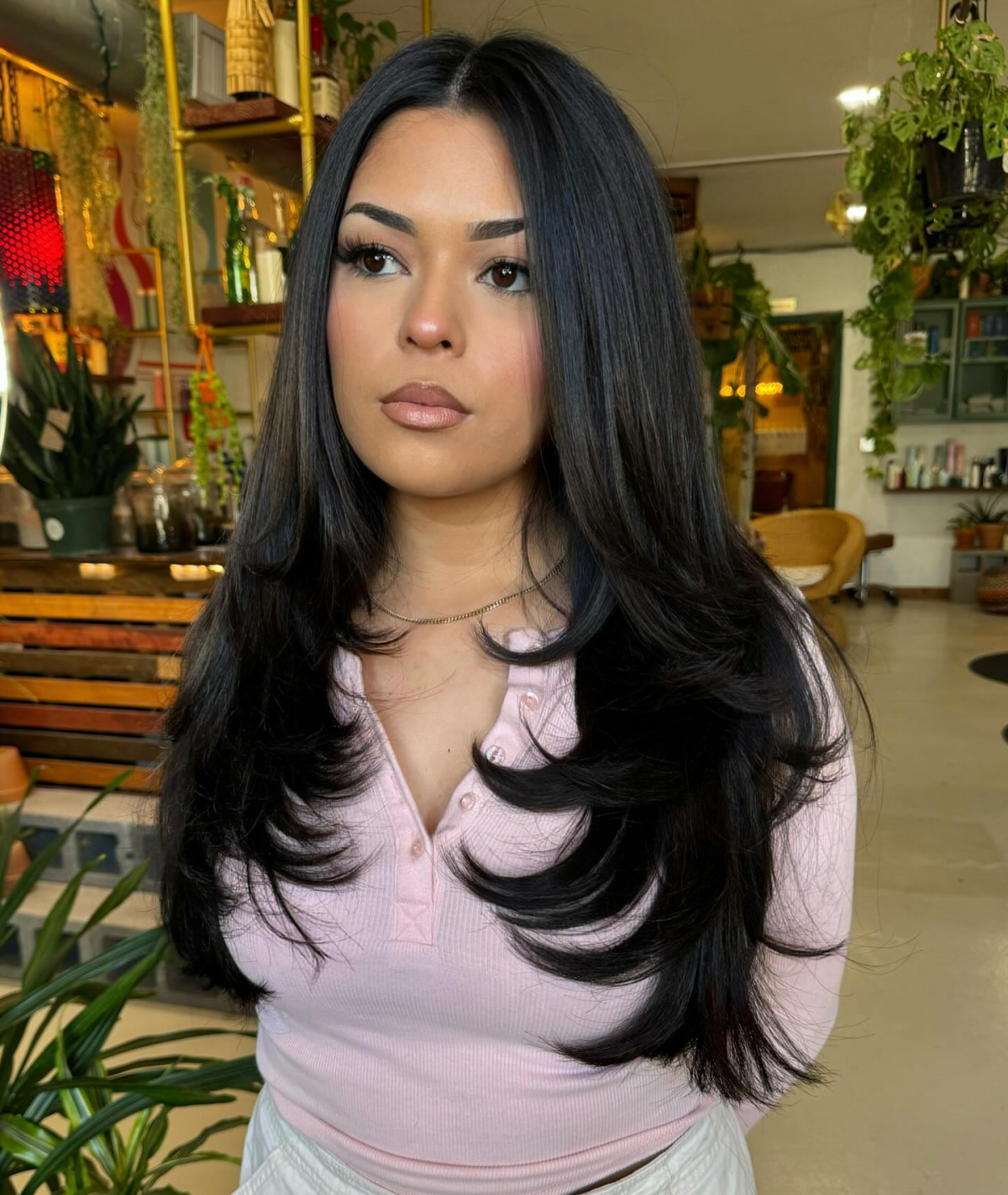
First, NEVER cut your own bangs with kitchen scissors. Please. I’m begging you. Those scissors crush and bend the hair, causing split ends and damage. It’s the fastest way to a haircut you’ll regret. My shears are a precision tool; yours are for opening a bag of chips. It’s just not the same.
Second, maintenance is not optional. Bangs grow, and they grow right into your eyes. Plan for a trim every 4-6 weeks to keep them looking sharp. And yes, you’ll probably have to style them every single morning. They wake up with a personality of their own.
And finally, the grow-out phase is real. Everyone with bangs thinks about growing them out eventually. Be prepared for a few awkward months of pinning and clipping. A good stylist can help you transition them gracefully into a side-sweep and then into layers.
But even with all that, are they worth it? Absolutely. There’s nothing like a perfectly cut fringe to make you feel polished, stylish, and like the best version of yourself. It’s a little bit of hair that makes a whole lot of difference, and it’s a privilege I get to share with my clients every single day.
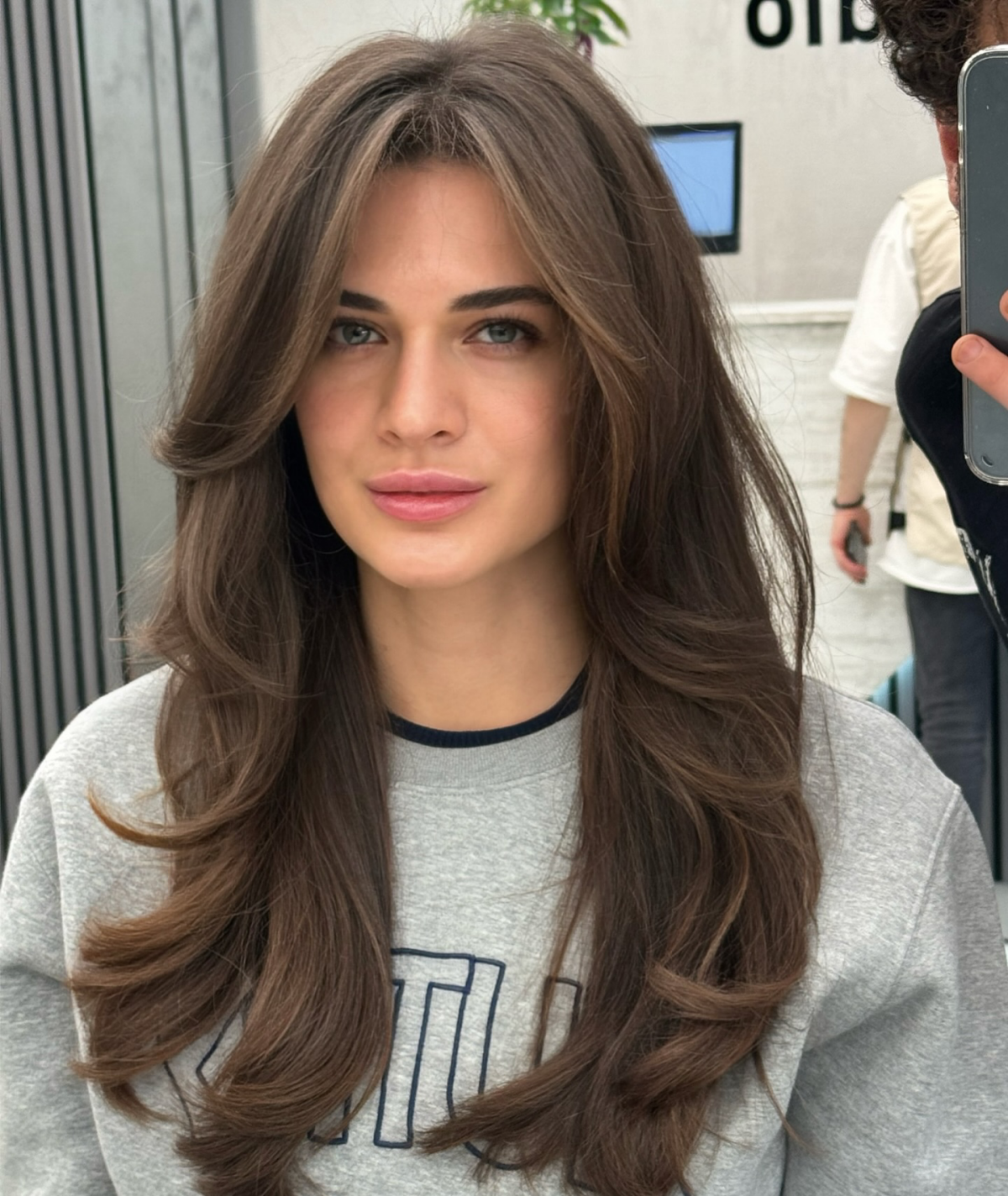
Galerie d’inspiration
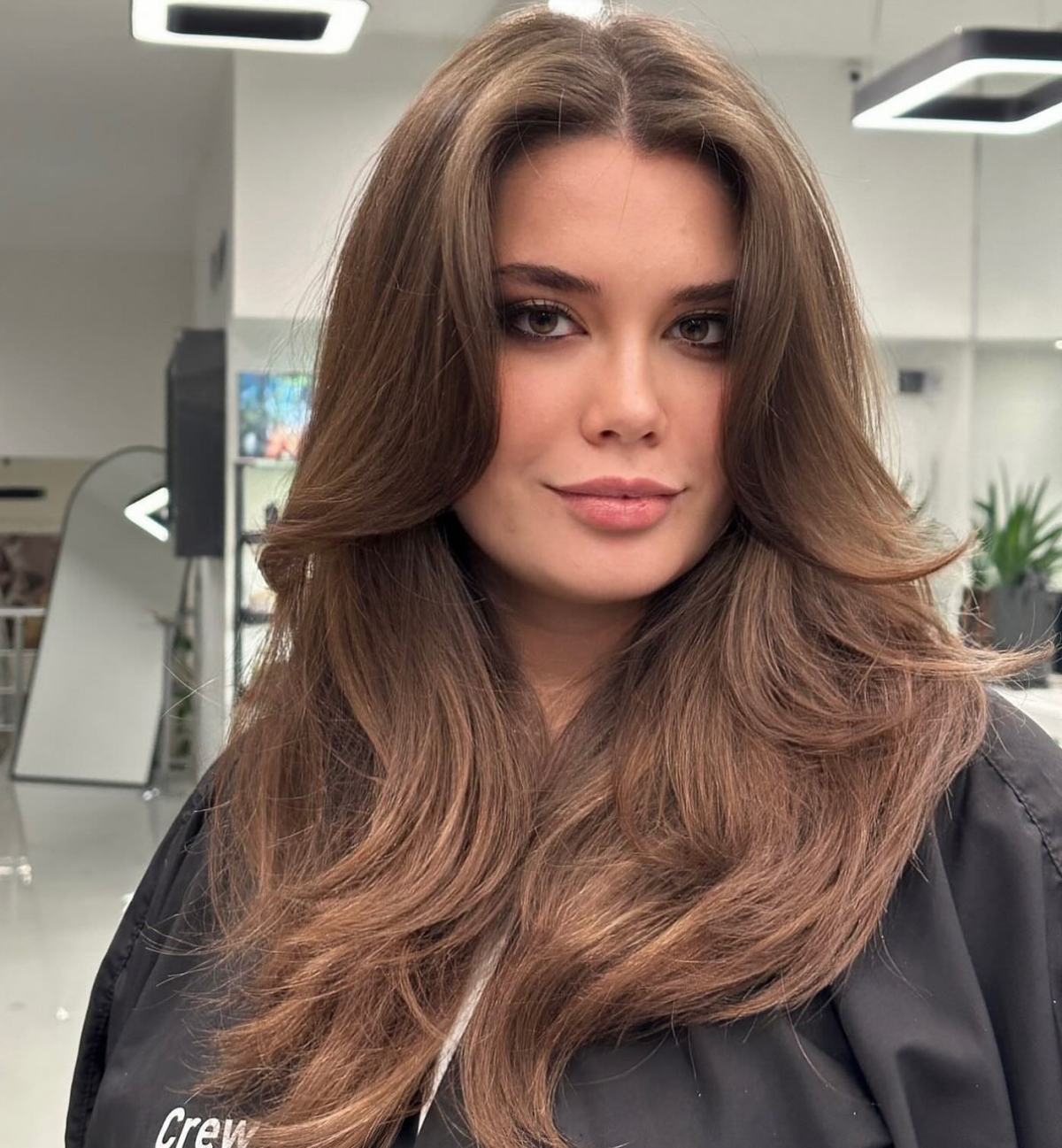
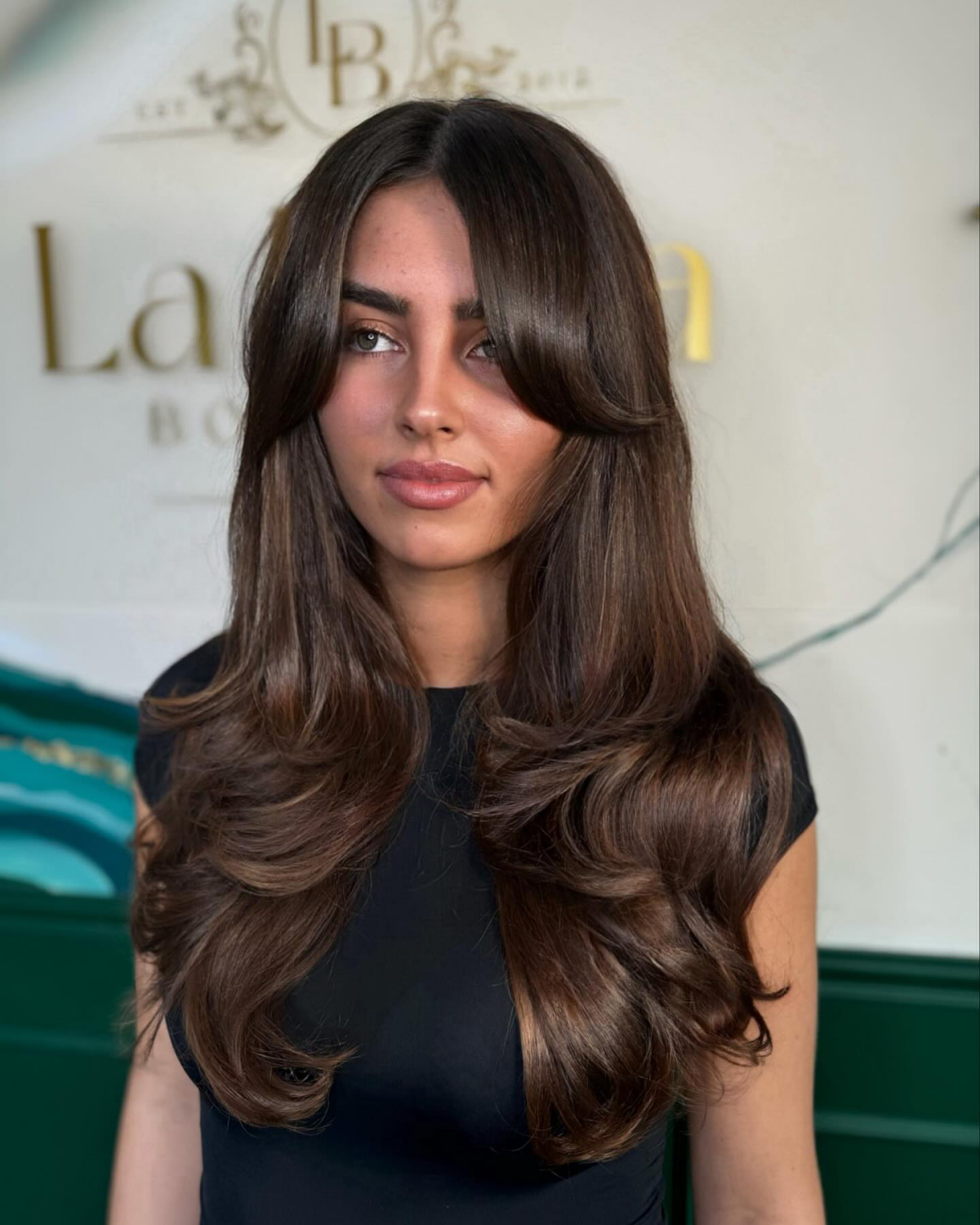
Your new fringe comes with a small but mighty toolkit. For flawless bangs every day, keep these three essentials on your shelf:
- A mini flat iron: Perfect for targeted smoothing right at the root, without having to wrestle with a full-sized tool near your face.
- A quality dry shampoo: A must-have for absorbing midday oil from your forehead. Batiste’s classic formula is a cult favorite for a reason.
- A small, boar-bristle round brush: It provides the perfect tension to create a soft, beveled edge as you blow-dry.
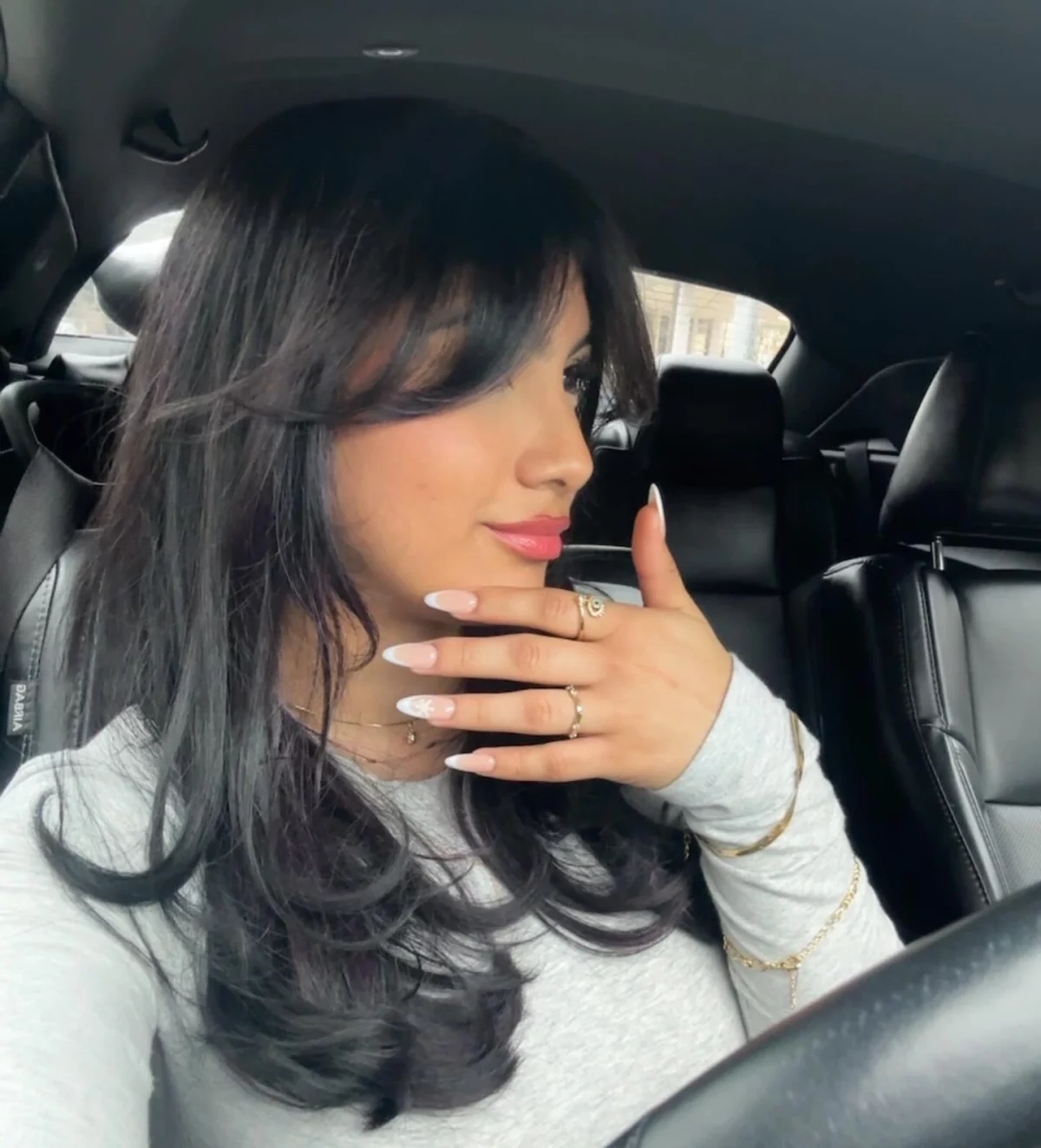
Over 90% of a hairstylist’s correction appointments for at-home cuts involve fixing bangs.
It’s a testament to how tricky they are! While a quick snip seems simple, achieving the right angle, texture, and line to complement your features is a true art form. The angle of the scissors and the tension on the hair can completely change the outcome. Trusting a professional isn’t just about avoiding a disaster; it’s about investing in a cut that truly works for you.

Can I just wash my bangs in the sink in the morning?
Absolutely! This is the number one time-saving hack for fringe-wearers. Simply section off your bangs, clip the rest of your hair back, and lean over the sink. A tiny drop of shampoo is all you need. Lather, rinse, and blow-dry them into place in under five minutes. It’s the secret to a fresh look every day, without the commitment of a full hair wash.
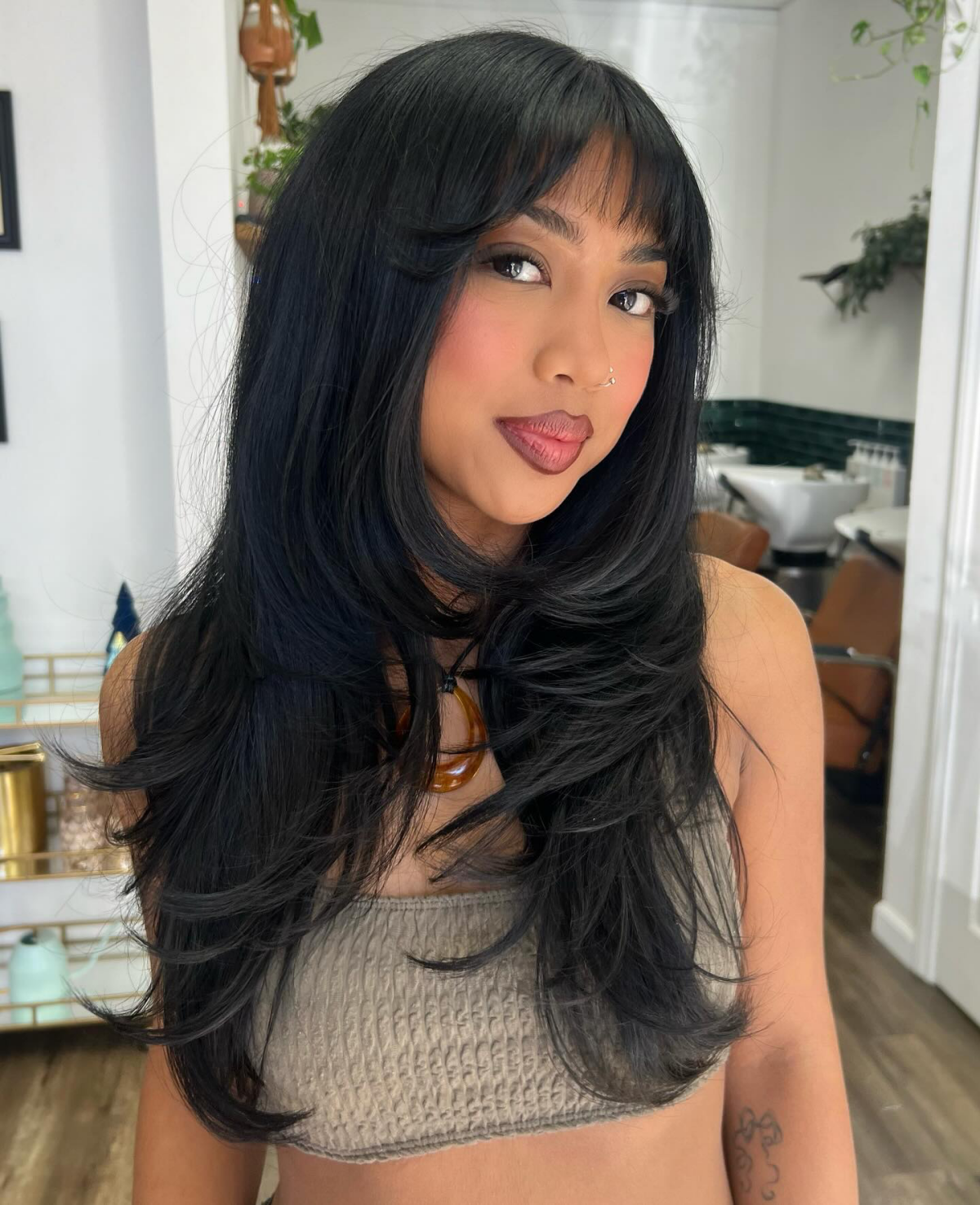
Blunt Bangs: Sharp, heavy, and cut straight across. This style makes a bold, graphic statement and works beautifully to accentuate strong jawlines or draw attention directly to the eyes. It requires dense hair and regular trims to maintain its sharp line.
Wispy Bangs: Soft, feathered, and see-through. This delicate fringe is ideal for finer hair or for those wanting a lower-commitment style. It softens features and adds a touch of romance without feeling heavy.
Forget ruler-straight, heavy fringes. The current obsession is the ‘Birkin bang,’ an homage to 70s icon Jane Birkin. It’s a softer, slightly longer fringe that parts naturally in the middle and skims the eyelashes. The key is its lived-in feel; it’s meant to look a little grown-out and piecey, offering an effortless French-girl vibe that’s more about attitude than absolute precision.










